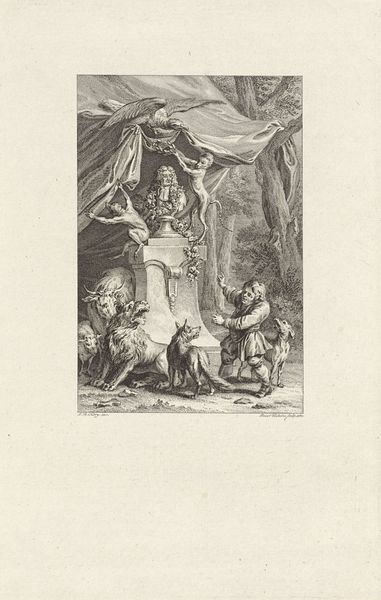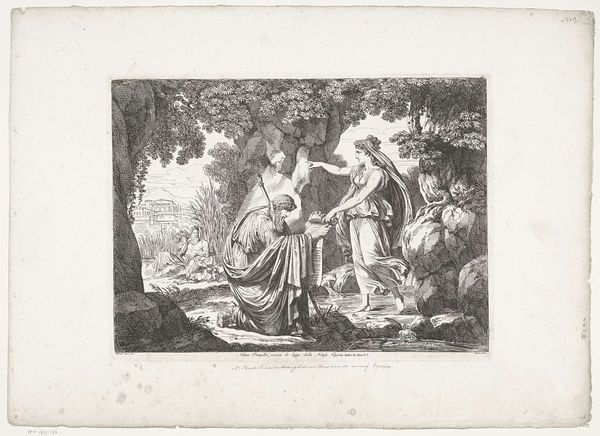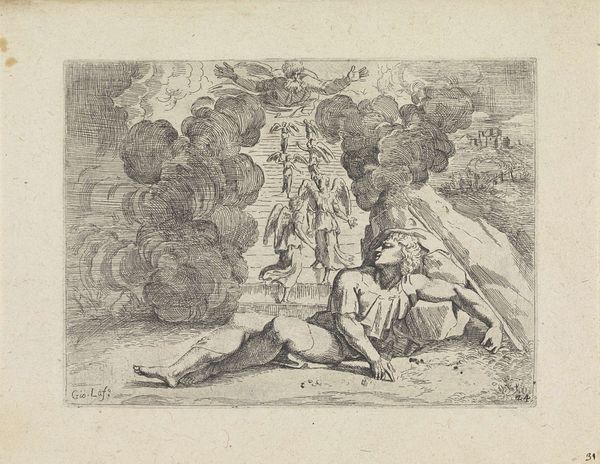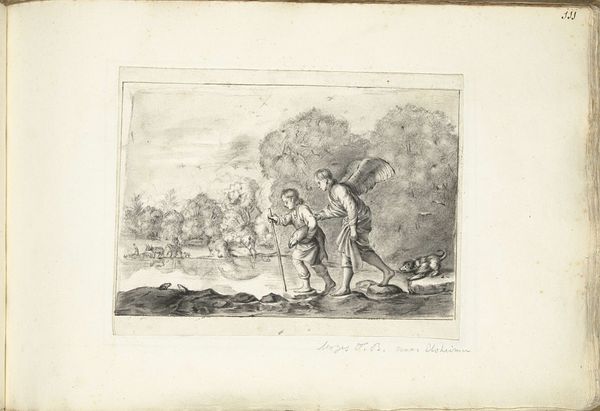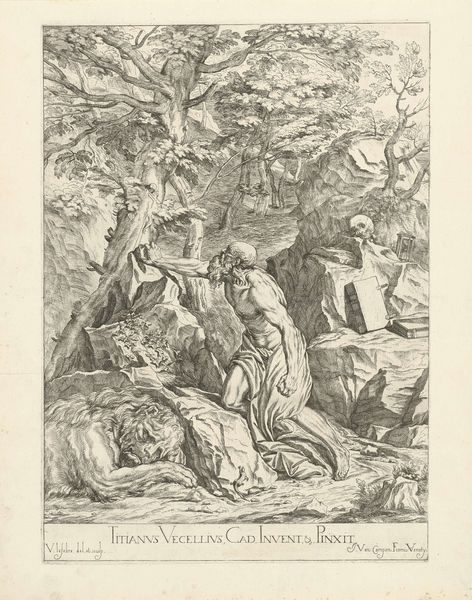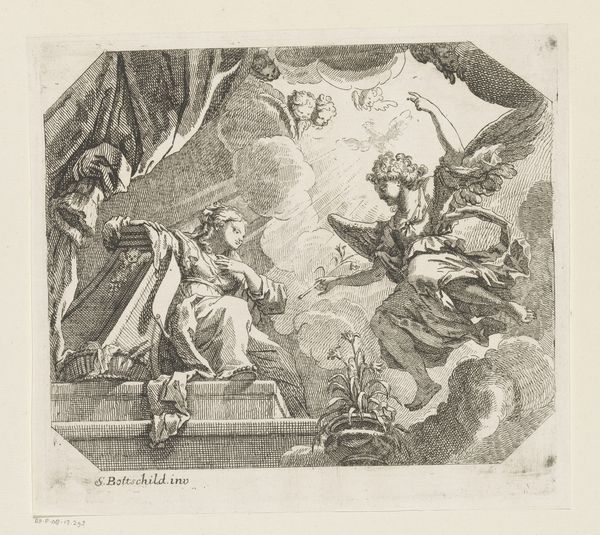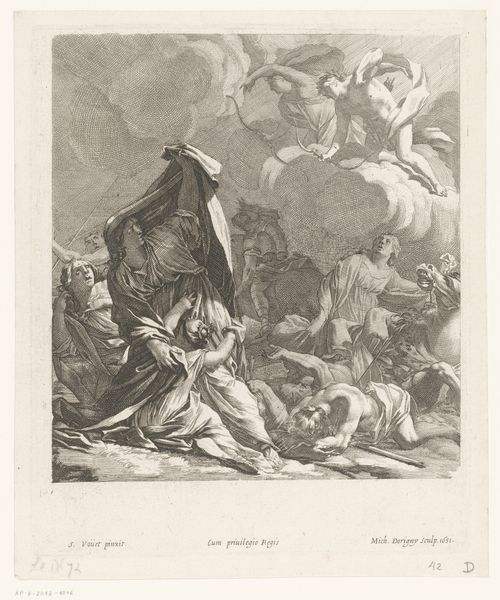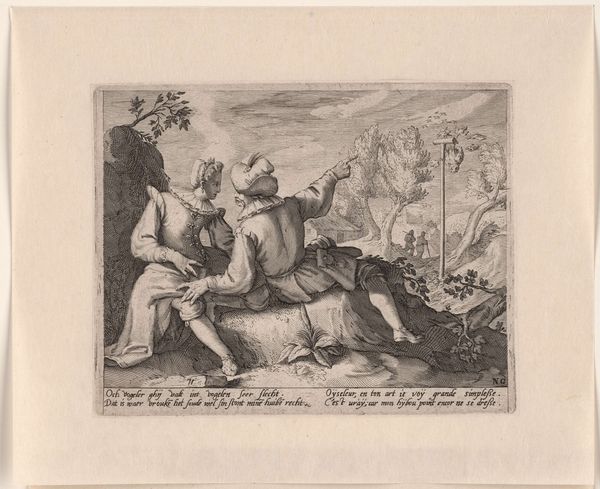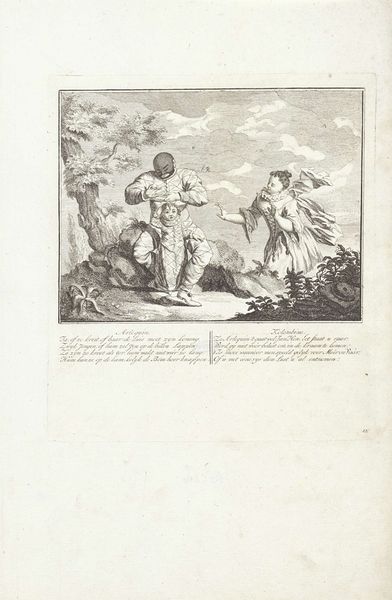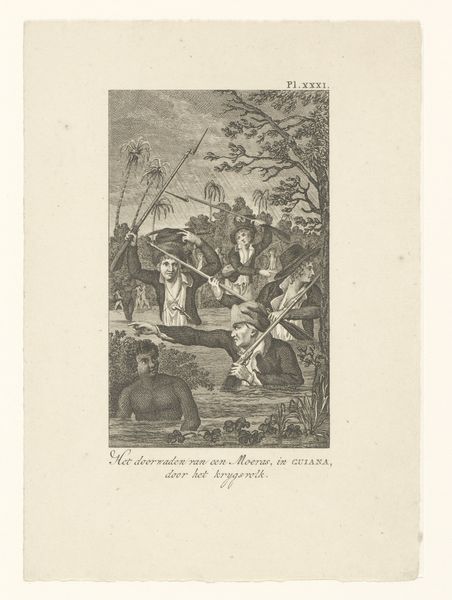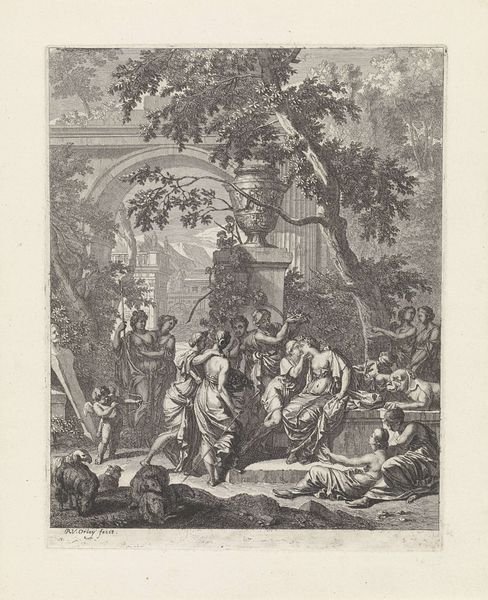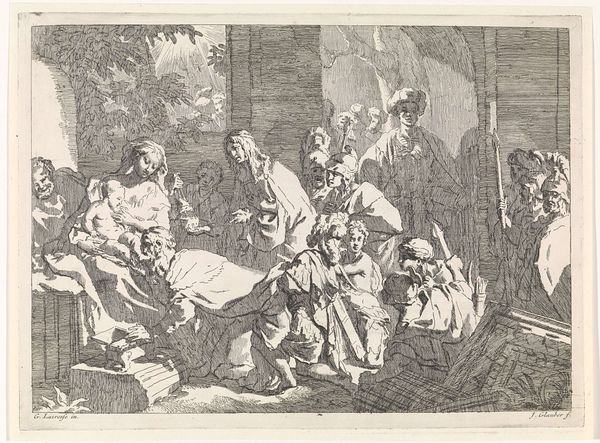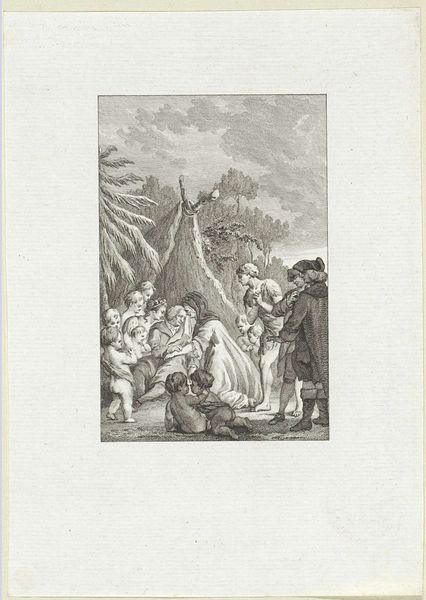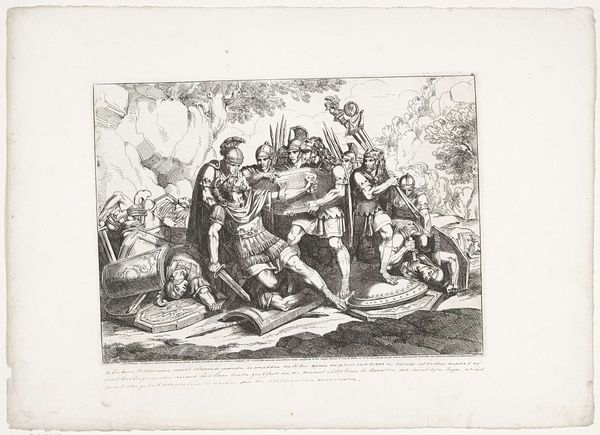
engraving
#
baroque
#
old engraving style
#
classical-realism
#
figuration
#
history-painting
#
academic-art
#
engraving
Dimensions: height 172 mm, width 232 mm
Copyright: Rijks Museum: Open Domain
Curator: Ah, this is "The Sacrifice of Iphigenia," an engraving from 1731 by Bernard Picart, housed here at the Rijksmuseum. The detail, as you can see, is simply astonishing. Editor: It is intricate. But it makes me intensely uneasy. There’s something terribly cold about the rendering of such a brutal act… Look at her resignation; it chills the bones. Curator: Well, let's remember that Picart worked in an age steeped in the traditions of classical realism and academic art. The engraving presents a powerful, if unsettling, moment from Greek mythology: Iphigenia's sacrifice to appease Artemis and allow the Greek fleet to sail to Troy. Editor: But to make it this… illustrative? The entire composition feels staged, from the horrified onlookers to the almost languid pose of Iphigenia. Does it distance the viewer from the horror, or somehow intensify it? I’m not sure. Curator: It reflects, perhaps, the tastes and values of his 18th-century audience. Picart wasn't aiming for raw emotion in the modern sense but to capture a moment of high drama according to the prevailing aesthetic. What do you think about Artemis’s gesture with the deer? The replacement that saves her. Editor: It feels…perfunctory. It's as if the goddess is ticking off a box, resolving a plot point rather than displaying any real compassion. I keep coming back to this overwhelming sense of emotional detachment in the piece. Perhaps Picart, influenced by his time, believed this restraint added to the gravity of the scene? A reflection of societal values, maybe? Curator: Precisely. Consider the role of prints and engravings during this era. They weren’t just art objects but also vehicles for disseminating stories, moral lessons, and cultural ideals. Picart's "Sacrifice of Iphigenia" engaged with a familiar narrative, reinforcing established notions of heroism, duty, and divine intervention, however problematic we may find those concepts today. Editor: So the engraving functions less as an expression of personal feeling and more as a mirror reflecting its time? Making us contemplate not just the scene depicted, but what that scene represented culturally at the time and why the elite class was interested in that specific content. Curator: Absolutely. And I think, approaching it that way allows us to move beyond our initial unease. Editor: Perhaps. Still… it’s difficult to shake the feeling that something vital has been sacrificed along with Iphigenia. Not in terms of the scene depicted, but in the depiction. Curator: Maybe it is a question to be addressed in another artwork.
Comments
No comments
Be the first to comment and join the conversation on the ultimate creative platform.
